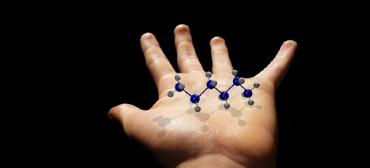Diagnostic and Evaluation Procedures
Procedures used to screen for prostate cancer and evaluate possible prostate problems:
In addition to regular physical examinations that include blood, urine, and possibly other laboratory tests, many groups such as the American Cancer Society suggest talking with your doctor to learn more about the pros and cons of screening for prostate cancer to help you decide if it is right for you. The tests used for screening include:
-
DRE (digital rectal examinations) DRE may be conducted annually for men over the age of 50 who choose to be screened. Men in high-risk groups, such as African Americans, or those with a strong family history of prostate cancer should consult their physician about being tested at a younger age.
-
PSA (prostate-specific antigen) PSA is a blood test that measures the level of prostate specific antigen. PSA is a substance produced by the prostate gland, which may be found in higher amounts in men who have prostate cancer. The PSA test may be done annually for men over the age of 50 who choose to be screened. Men in high-risk groups, such as African Americans, or those with a strong family history of prostate cancer, should consult their physician about being tested at a younger age or more often.
What are some other prostate cancer evaluation procedures?
If the DRE or PSA is unusual, your physician may repeat the tests or request an ultrasound and other procedures. These evaluation tools may include:
-
prostate biopsy - a test in which the doctor inserts thin, hollow needles into the prostate to get samples for examination under a microscope to determine if cancer cells are present.
-
transrectal ultrasound (TRUS) - a test using sound wave echoes to create an image of the prostate gland to visually inspect for abnormal conditions such as gland enlargement, nodules, penetration of tumor through capsule of the gland, and/or invasion of seminal vesicles; may also be used for guidance of needle biopsies of the prostate gland and/or guiding the nitrogen probes in cryosurgery.
-
computed tomography scan (also called a CT or CAT scan) - a diagnostic imaging procedure that uses a combination of X-rays and computer technology to produce horizontal, or axial, images (often called slices) of the body. A CT scan shows detailed images of any part of the body, including the bones, muscles, fat, and organs. CT scans are more detailed than general X-rays.
-
magnetic resonance imaging (MRI) - a diagnostic procedure that uses a combination of large magnets, radiofrequencies, and a computer to produce detailed images of organs and structures within the body.
-
radionuclide bone scan - a nuclear imaging method that helps to show whether the cancer has spread from the prostate gland to the bones. The procedure involves an injection of radioactive material that helps to locate diseased bone cells throughout the entire body, suggesting possible metastatic cancer.
-
lymph node biopsy - a procedure in which tissue samples are removed (with a needle or during surgery) from the lymph nodes for examination under a microscope; to determine if cancer or other abnormal cells are present.
The diagnosis of cancer is confirmed only by a biopsy.





















